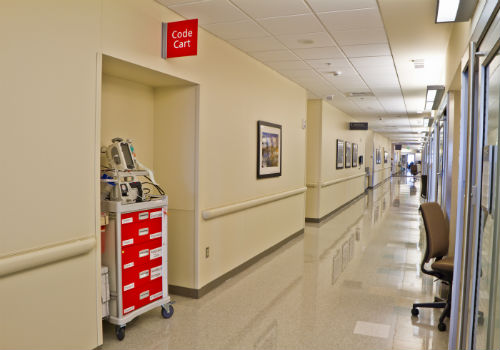Because of their versatility and maneuverability, medical storage carts are great options for cutting down workplace clutter and keeping supplies organized. In medical environments that can get hectic, or that require moving to several locations on a floor, these storage carts keep supplies handy and optimize the time and care medical providers can give their patients.
Medical storage carts can be utilized in a number of different departments for a multitude of purposes. Some of these uses include surgical supplies and procedure carts, anesthesia carts, standard medical supplies, and code carts.
1.) Surgical supplies and procedures
Every surgery or procedure has standard supplies that are necessary to use throughout the surgical process. These include disinfectants, bandages, surgical instruments, and other vital tools. Medical storage carts can be pre-loaded with these supplies and transported to any surgical unit in a hospital.
Some hospitals prefer to set up procedure-specific carts, such as anesthesia carts or scope procedure carts. In addition to the standard supplies, these carts contain medications and supplies specifically used during the administration of anesthesia or scopes.
Because these carts are on wheels, they can be moved to any room with ease and maneuverability. They are durable, with wheels that are designed to go over any flooring with minimal interruption. This helps cut down on delays when lifesaving measures are being taken, and critical supplies need to be delivered quickly.
2.) Medical supply carts
Rolling medical supply carts deliver the standard supplies to any patient’s room. These can usually be customized and include essential pieces of equipment such as scanners, printers, vital signs devices, sharps containers, and even hand sanitizer.
Medical supply carts can be equipped with either manual or digital locks so that security is not a concern for healthcare providers who are moving throughout their building. Sensitive supplies such as medication can remain secure, and medication supply carts usually have a computer with a hospital information system (HIS) that will dispense the proper amount of medication for each patient.
When healthcare providers don’t have to search around for supplies or leave the room to retrieve their tools, they can spend more time delivering one-on-one patient care. Medical supply carts are crucial in helping healthcare professionals spend more time listening to their patients and providing quality direct care.

3.) Code carts
Perhaps one of the most important carts in any hospital, a code cart, or crash cart, is a life-saving medical storage cart. Code carts contain essential equipment, including intubation tubes, medication, and sterile kits of supplies. They can also be equipped with devices such as vital sign monitors and IV poles to start lifesaving intravenous medications quickly.
These carts are an all-in-one solution to a medical crisis, especially in the emergency room. Because of their mobility, it’s easy to get them through a crowded corridor to a patient’s bedside quickly, which saves precious time.
4.) Other medical storage carts
Treatment carts provide a way for hazardous materials to be stored, removed, and transported out of the hospital without contaminating surrounding areas. Treatment carts are also known as wound carts, and they are usually used when medical personnel is treating serious injuries.
The need for separated areas within the cart to keep contaminated materials from sterile supplies makes their design and customization especially important.

Medical utility carts are another important medical storage cart. While they don’t contain drawers, they are usually used to store non-sensitive supplies, such as hospital gowns and extra linens. They can also be utilized to move supplies or equipment from one location to another quickly.
Final thoughts
Medical storage carts are some of the most essential tools healthcare professionals deploy in their care of patients in medical settings. They contain necessary supplies and technology that can be brought to the patient quickly, eliminating wait times and unnecessary exits from the patient’s room.


